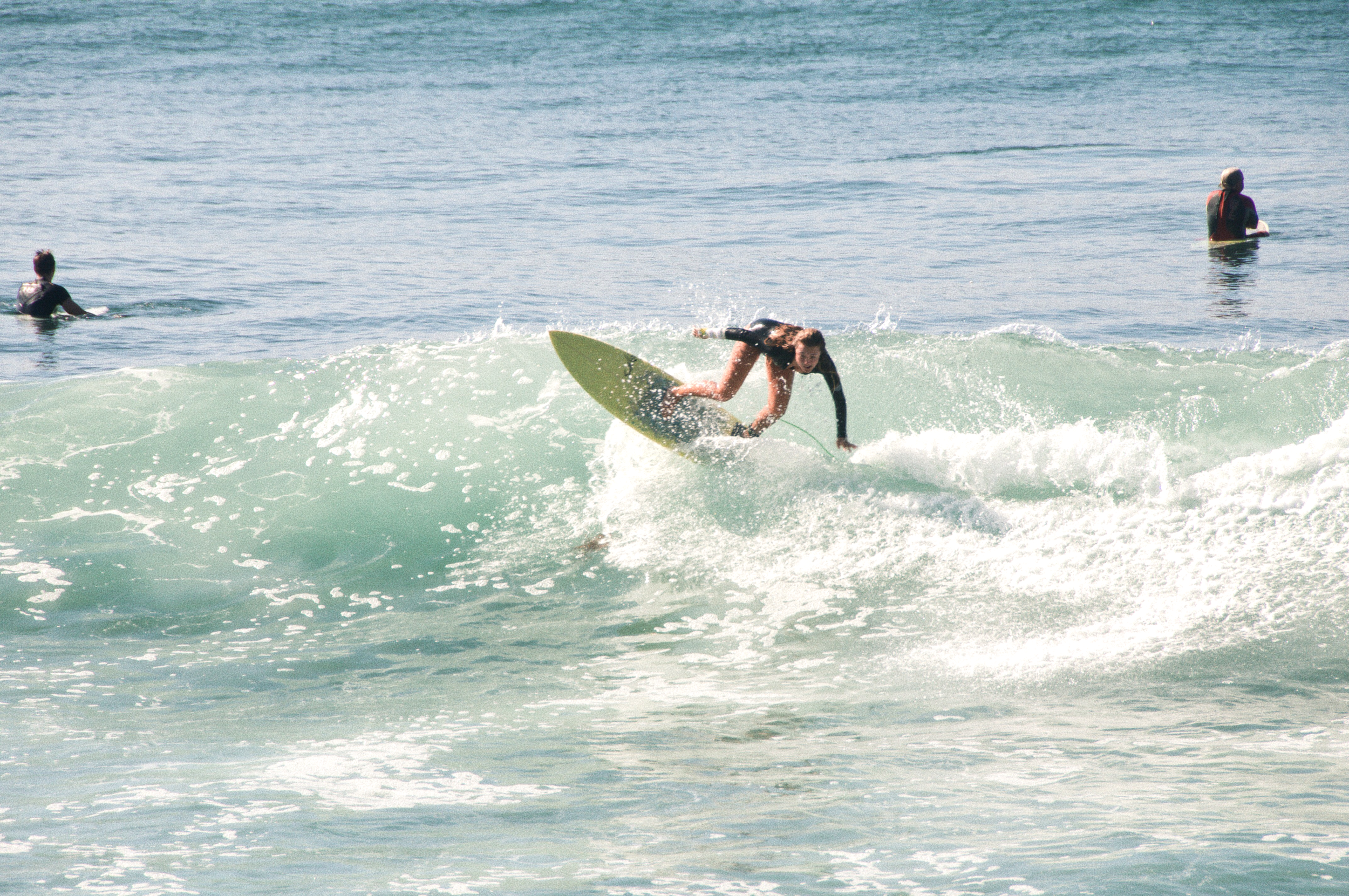Tide turns on pay inequality for surfers
Jordyn Romero, a senior documentary film major, is usually the only female surfer in the lineup, she said, but this may change after the WSL announced equal pay for male and female surfers starting in 2019. Photo courtesy of Jordyn Romero
Senior Jordyn Romero is used to being the only female surfer in the water. The documentary major and marketing manager of Chapman’s surf club said she has been “desperate for some girl shredders” in Orange County to paddle out with.
At a women’s-only Malibu surf event last summer, she surfed with about 20 experienced female surfers, she said. But as Romero and her group passed one of the only two male surfers in the water, one of the men asked Romero if the women were there for surfing lessons, or if they were part of a church group.
“It was the very first time that he felt what it was like to be a girl in the lineup,” Romero said.
In June, the World Surf League (WSL) and Billabong were criticized after a photo was released showing the winners of a junior surfing tournament in South Africa holding their award checks. The picture showed men’s winner, Rio Waida, with 8,000 rand and women’s winner, Zoe Steyn, with 4,000 rand, the equivalent of about $536 and $268 US dollars. The WSL announced Sept. 7 that male and female surfers will receive equal prize money at every WSL-sanctioned event at the beginning of the 2019 season, which starts April 3.
“It should be like that in every sport,” said Helene Drean, junior communication studies major and member of the Chapman Surf Club. “Women are working as hard and training just as hard as men to get into the same position.”
The WSL also appointed its first-ever female CEO, Sophie Goldschmidt, in July 2017.
“I’m a huge advocate of girl power, especially when it comes to surfing,” Romero said. “I think that having a woman in power at a surf company is just going to start setting an example and giving young girls a role model to start making female CEOs the standard.”
In August, the California State Lands Commission released a reportrecommending that the WSL only be issued a permit for the Mavericks Challenge, a big-wave surf contest held in Half Moon Bay, if male and female surfers received equal prize money. Soon after, the WSL withdrew their application for a Mavericks permit, but it was unclear whether the equal pay recommendation was the cause, Surfer Magazine reported. After announcing that male and female surfers will be paid equally at all events, the league will have the opportunity to re-apply for a permit on Oct. 18.
“I think (the report) was a big motivator (for the WSL’s decision). Like, why not do this for all of the events?” said Chad Sloggett, junior environmental science and policy and economics double major and president of the Chapman surf club.
Technological advances like Kelly Slater’s “wave machine,” a 100-ton hydrofoil pulled along a 700-yard track that creates the “perfect” wave, are another step toward gender equality in the surf world, Sloggett said. The inaugural Surf Ranch Pro was held last weekend at the wave pool, located in Lemoore, California.
“They’re all surfing the same wave, they all have an equal chance,” Sloggett said. “Why would you not pay them the same if they’re surfing the exact same wave?”
Not only are female surfers typically paid less, they also face different stigmas than male surfers, including the perception that female surfers tends to focus on their bodies rather than their skills, Drean said.
“Personally, I go into the water and I want the boys to be like ‘She’s kicking ass,’ not like ‘That’s a nice ass,” Drean said.
In the male-dominated sport, female surfers in the water can sometimes be the recipients of “creepy” and “uncomfortable” comments from men, Sloggett said.
“There’s some macho guys in the lineup sometimes that just think they’re hot stuff. They’re trying to flex on everyone, trying to catch better waves,” he said. “Some guys can creep on the one girl that’s in the lineup and make them uncomfortable.”
Still, Drean said the fact that there’s usually a majority of guys in the water pushes her perform better.
“If you go in the lineup and you’re the only girl, they’re going to be more impressed that you’re there and that you’re the only girl,” she said. “It’s changing out there in the lineup. They’re seeing girls with potential (who are) surfing better than them sometimes.”

